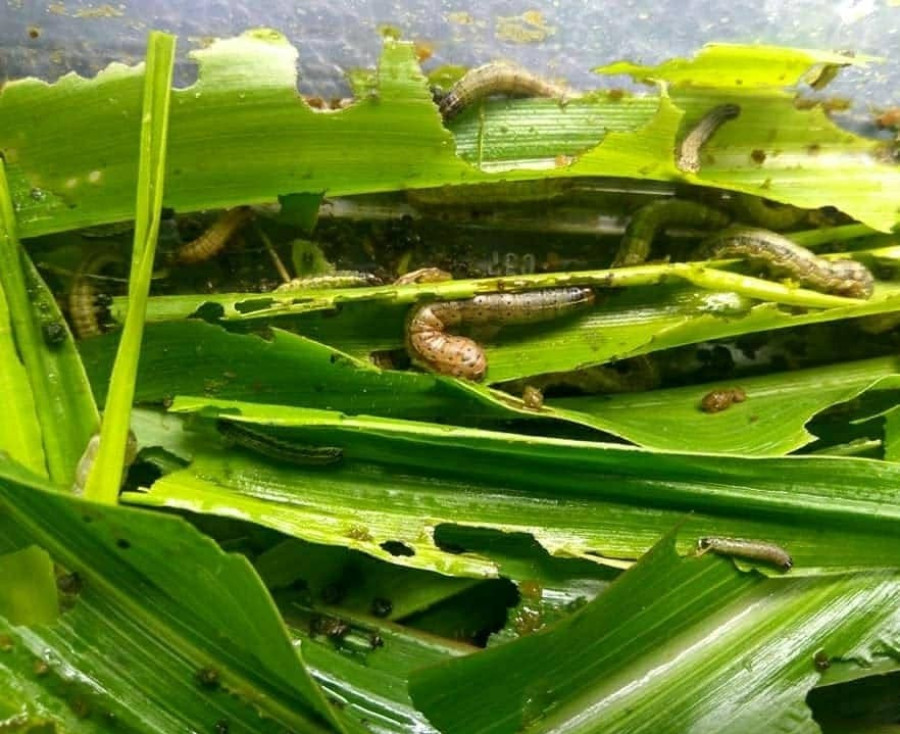Bagmati Province
Fall Armyworm destroying harvest in Ramechhap
Villagers urge local unit to adopt immediate pest control measures.
Tika Prasad Bhatta
Fall armyworm, a type of agricultural pest, has taken over more than hundred ropanis of land in Bhirpani, Dabkha, Lakpa and Bhalayakhrka areas of Ramechhap district. Swarms of these pests have been spreading through fields in the last three months, posing great concern for farmers who believe that this outbreak may threaten the overall grain output from the district this year.
According to Shankar Paudel, a local man, armyworm has completely destroyed corn and other crops planted this season. Farmers have requested the local until to adopt pest control measures to prevent further destruction of crops.
Durga Majhi, a farmer of Dabkha, who was at the rural municipal office in Khandadevi to urge the authority for immediate action, said, “I have replanted corn in my field after the first lot was destroyed by pests. We didn’t know what kind of pests they were earlier but now we know that they are fauji kira (local name). Preventive measures must be taken immediately to control these destructive pests.”
Prem Bahadur Tamang, chairman of Khanda Devi Rural Municipality, said that the local unit has called a team of technicians from the Nepal Agriculture Research Council to gauge the situation in Ramechhap.
“The team will come prepared with pesticides to control the pests,” he said.
Dinesh Acharya, chief at the Agriculture Knowledge Centre in Ramechhap, said they also plan to distribute pesticides to farmers.
“Adult pests are difficult to get rid of but we plan to make strong efforts to control them,” Acharya said.
First found in America, fall armyworm has been spreading through Africa and Asia since 2016, flying up to 100 km (60 miles) a night, agriculture experts say.
Usually, fall armyworm becomes active at night and feed on corn plants.
“It also affects paddy, wheat and millet crops,” said Acharya.
According to Acharya, these pests entered Ramechhap from Sindhupalchok district three months ago.
“These pests were also found in India last year,” he said.




 13.12°C Kathmandu
13.12°C Kathmandu (1).jpg)













